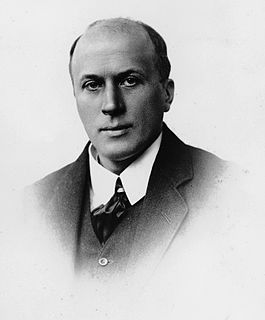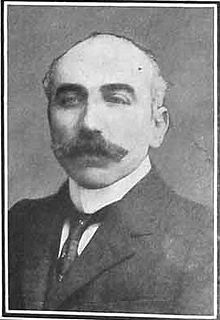History
First to be formed was the National Association of Discharged Sailors and Soldiers (NADSS), established following a meeting in Blackburn in September 1916 and initially linked to the labour and trade union movement. In April 1917, the Asquith Liberal MP James Myles Hogge sponsored a meeting at the National Liberal Club over the Military Service (Review of Exceptions) Bill, which proposed to reclassify those invalided out of the army to identify those who might be recalled to service. This meeting led to the formation of the National Federation of Discharged and Demobilised Sailors and Soldiers (NFDSS).
The NFDSS decided to fight by-elections to put its message across. In the Liverpool Abercromby byelection in June 1917, the NFDSS candidate polled a quarter of the vote. In the 1918 general election its National Executive approved five candidates, and local branches sponsored 25 more, considered Independent NFDSS candidates. In three Leeds constituencies, the candidates were nominated jointly by the NFDSS, the NADSS and the Comrades of the Great War. None of the candidates were elected although many polled substantial votes. In addition, the NADSS sponsored a candidate, Robert Hewitt Barker, in Sowerby in unusual circumstances, in which he inherited the position of unofficial Conservative Party candidate and won.
The groups were politically diverse. Hogge was a left-wing Liberal, and most of the NFDSS were similarly left wing: among the NFDSS candidates was Ernest Thurtle, who later became a Labour Party MP. Henry Hamilton Beamish was a member of both the Vigilante Society and the NFDSS. In the 1918 general election he was one of the candidates sponsored by the NFDSS branches but not approved by the NFDSS National Executive, again in Clapham.
Following the election, none of the groups continued in active party politics. Hogge resigned as President of the NFDSS in January 1919. Following pressure from Douglas Haig, the NFDSS lifted its ban on officers being members in June 1919 and the three groups together with the Officers' Association began merger talks. At a Unity conference on 14–15 May 1921, they merged to form The Royal British Legion.
The Progressive Party of Canada was a federal-level political party in Canada in the 1920s until 1930. It was linked with the provincial United Farmers parties in several provinces, and it spawned the Progressive Party of Saskatchewan, and the Progressive Party of Manitoba, which formed the government of that province. The Progressive Party was part of the farmers' political movement that included federal and provincial Progressive and United Farmers' parties.
There have been various groups in Canada that have nominated candidates under the label Labour Party or Independent Labour Party or other variations from the 1870s until the 1960s. These were usually local or provincial groups using the Labour Party or Independent Labour Party name, backed by local labour councils or individual trade unions. There was an attempt to create a national Canadian Labour Party in the late 1910s and in the 1920s, but these were only partly successful.

A by-election was held in the Bermondsey constituency in South London, on 24 February 1983, following the resignation of Labour MP Bob Mellish. Peter Tatchell stood as the candidate for the Labour Party, and Simon Hughes stood for the Liberal Party. Following a bitter campaign, the Liberals made huge gains and took the seat, with a majority of votes cast. Labour's vote fell from 63.6 per cent in May 1979 to 26.1 per cent as Tatchell came a distant second, while the Conservative candidate, Robert Hughes, managed only fourth place. With a swing of 44.2%, the 1983 Bermondsey by-election remains the largest by-election swing in British political history.
The National Party was a short-lived British political party created in August 1917 as a right-wing split from the Conservative Party.
The Comrades of The Great War were formed in 1917 as an association to represent the rights of ex-service men and women who had served or had been discharged from service during World War I. Comrades of The Great War was one of the original four ex-service associations that amalgamated on Sunday 15 May 1921 to form The British Legion.

James Myles Hogge was a British social researcher and Liberal politician.
The 1917 Liverpool Abercromby by-election was a parliamentary by-election held on 28 June 1917 for the British House of Commons constituency of Liverpool Abercromby. The seat had become vacant when the Conservative Member of Parliament (MP) Richard Chaloner had taken the post of Steward of the Chiltern Hundreds on 18 June 1917, thus effectively resigning from the Commons. Five days later, Chaloner was created Baron Gisborough. He had been MP from Liverpool Abercromby since the January 1910 general election. The Conservative candidate, Lord Stanley held the seat for the party. He remained the constituency's MP until the seat was abolished for the 1918 general election.
The 1913 Chesterfield by-election was a by-election held for the British House of Commons constituency of Chesterfield in Derbyshire on 20 August 1913.
The National Association of Discharged Sailors and Soldiers (NADSS) was a British veterans' organisation.
The National Federation of Discharged and Demobilised Sailors and Soldiers (NFDDSS) was a British veterans organisation.

Edward Anthony Strauss was an English corn, grain and hop merchant of German-Jewish background. He was a Liberal, later Liberal National Member of Parliament.

Sir Courtenay Cecil Mansel, 13th Baronet was a Welsh landowner and farmer, barrister and Liberal Party politician who later joined the Conservatives.
The 1918 Wansbeck by-election was a parliamentary by-election held for the House of Commons constituency of Wansbeck in Northumberland on 28 May 1918.
Sir Thomas Frederick Lister CBE was the first chairman of the British Legion. Along with Field Marshal Douglas Haig, 1st Earl Haig, Lister was a leading advocate for the foundation of the British Legion in the aftermath of the First World War.
William Frederick Jackson, 1st Baron Jackson was a British fruit farmer from Ross-on-Wye in Herefordshire who was noted for his scientific cultivation of a range of fruits. He was a Liberal Party activist who joined the Labour Party, and became the Member of Parliament (MP) for Brecon & Radnor from 1939 to 1945.
The 1917 Spalding by-election was a parliamentary by-election held for the House of Commons constituency of Spalding in Lincolnshire on 25 October 1917.
The 1917 Islington East by-election was a parliamentary by-election for the British House of Commons constituency of Islington East held on 23 October 1917.
The 1917 Aberdeen South by-election was a parliamentary by-election for the House of Commons constituency of Aberdeen South comprising the local government wards in the southern part of the city of Aberdeen. The by-election took place on 3 April 1917.

The 1938 Aylesbury by-election was a parliamentary by-election for the British House of Commons constituency of Aylesbury on 19 May 1938.
Arthur Charles Bannington, sometimes known as Charlie Bannington, was a British political activist.
This page is based on this
Wikipedia article Text is available under the
CC BY-SA 4.0 license; additional terms may apply.
Images, videos and audio are available under their respective licenses.





